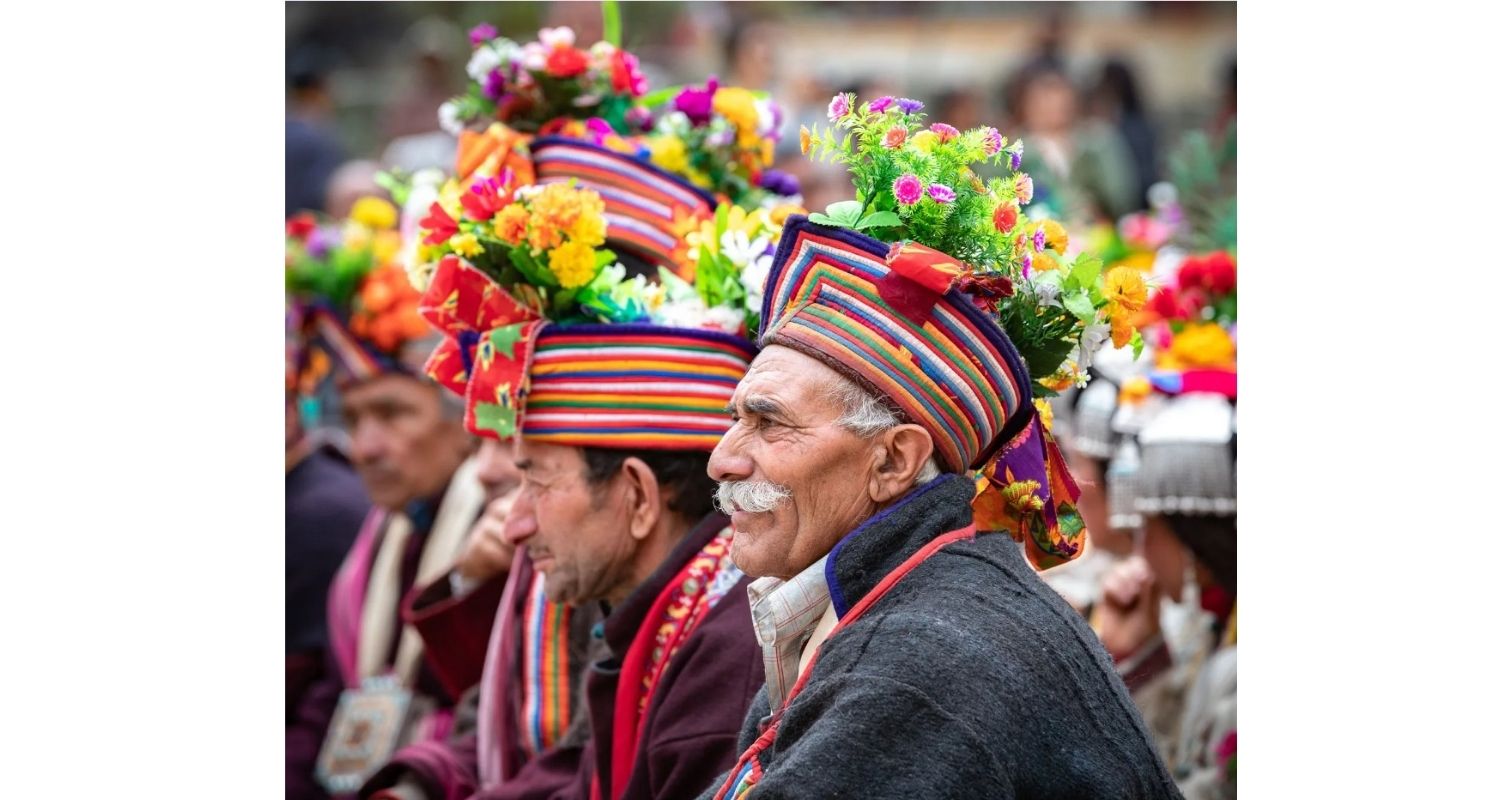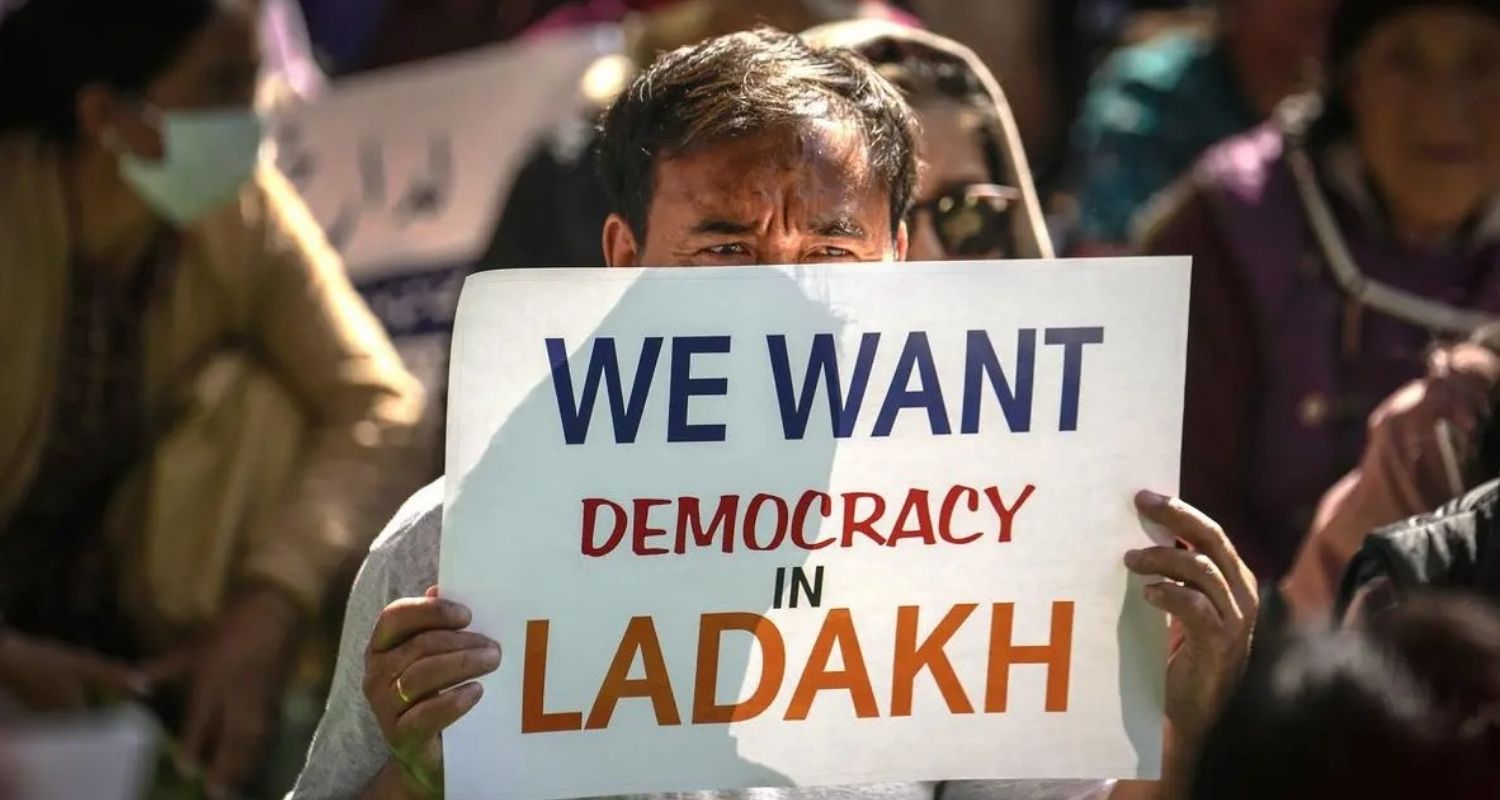Trending:
Ladakh—a clash of geopolitics and local aspiration
Ladakhi leaders had been pushing for separation from the Kashmir Valley for decades due to cultural differences and to address underdevelopment and underrepresentation within the state.News Arena Network - Chandigarh - UPDATED: October 1, 2025, 08:43 PM - 2 min read

Spread over an area of 59,146 km², the sparse population isolates Ladakh politically.
The Shangri-la is losing its quiet. Geographically isolated, topographically harsh and culturally exotic; Ladakh, the land of monasteries and monks rarely grabs headlines due to several factors. The high altitude, cold weather and minuscule population make it a difficult choice for political experiment and unrest.
With barely 2.8 lakh population, it is not an attractive vote bank. Secondly, spread over an area of 59,146 km², the sparse population further isolates Ladakh politically. The Ladakhi Buddhists are not Ambedkarites; their politics is not of the caste and reservation. Ladakh is divided into two districts—Leh with majority Buddhist and Kargil with predominantly Muslim population. Often, the two districts have different aspirations.
The September 24 unrest
Yet, on September 24, the ongoing protests demanding statehood and extension of the Six Schedule to Ladakh turned violent. On other days of the ongoing protest, barely 500 people gathered in Leh at the protest site. On Wednesday, September 24, about 7,000 people had gathered, mostly youth. They thronged to Leh on the call of educationist-turned-environment activist Sonam Wangchuk, who reminded them of the power of Gen Z, in turning around the political scenario of Nepal, Sri Lanka and Bangladesh.
The ongoing agitation for statehood has been spearheaded by two outfits—the Apex Body, Leh and the Kargil Democratic Alliance (KDA). Despite repeated requests by the leaders of the two outfits to remain calm, a section of the youth left the venue on September 24. They stoned the office of LAHDC and later burnt the office of BJP and of the chief executive councillor along with a police vehicle. The trigger for the rage among the youth was said to be hospitalisation of two of the 15 people who were on hunger strike demanding statehood.
When the youth went out demanding a bandh in the city, the police opened fire. This resulted in the death of four persons; three in their 20s from Hanu, Skur Buchan and Igoo village while one, an ex-Army man from Ladakh Scouts hailed from Kharnakling. Residents of Ladakh belong to different tribal groups scattered across the inhospitable terrains like Chang La and Zanskar. These people travel hundreds of kilometres to take part in the protests in Leh, demanding legislative guarantees.

Like other small communities, Ladakhis tend to be insular. Their distinct cultural identity and rights over their land are of utmost importance, since they belong to different tribes. While they welcomed the separation of Ladakh from Jammu and Kashmir in 2019, when Article 370 was abrogated and Ladakh was turned into a UT, they fear lack of Sixth Schedule guarantees will expose Ladakh to demographic change and cultural invasions. As such Ladakh is witnessing disintegration of community and alien concepts like old-age homes are cropping up in the urban areas. Sudden rise in incomes and exposure to the outside world due to influx of tourism is disturbing their fragile culture.
Ladakhis have had a long history of resistance despite the serene monasteries populating the landscape.
Cultural uniqueness
Ladakh is different. It never participated in the freedom struggle of India. Its political contours have been shaped by strategic borders and cultural identity. An independent Himalayan kingdom, ruled by the Namgyal dynasty, had strong political and cultural linkages with Tibetan Buddhism and trans-Himalayan trade. In 1834, Sikh General Zorawar Singh, acting for Raja Gulab Singh of Jammu, annexed Ladakh, bringing it under Jammu’s influence; under the wider suzerainty of Sikh empire. Ladakhis never forgave Zorawar Singh for this act.
After the first Anglo-Sikh war (1845-46), under the Treaty of Amritsar (1846), the East India Company formalised the transfer of hilly and mountainous terrains east of Indus to Raja Gulab Singh of Jammu for helping the British against the Sikh rulers. Thus, the princely state of Jammu and Kashmir was formalised under Dogra rulers and the political fate of Ladakh got attached to Jammu and Kashmir for the remainder of the 19th century and most part of the 20th century.
Also read: Ladakh—handle with care
When the British left India in 1947, Ladakh was in a peculiar position. Since the merger of the J&K state with India had still not worked out; the decision was in the hands of the king of J&K state. Between 1947-1949, prominent Buddhist figures from Ladakh, namely Kushok Bakula Rinpoche (Leh airport is named after him), Thupstan Chognor et al articulated Ladakh’s aspirations and concerns to the then PM of India Jawaharlal Nehru. Their early representations sought direct merger of Ladakh with the Indian state, and protections against marginalisation in the state of J&K polity, citing their cultural distinctiveness. But eventually, decisions over their lands, grazing rights, cultural institutions and local development have been made by outsiders who were not familiar with their cultural uniqueness.
Ladakh has 59,146 km² of area controlled by India, with just two districts Leh and Kargil and a population of around 2.8 lakh while the area under J&K is 42,241 km², with 26 districts and 1.37 crore population. Therefore, till 2019, when J&K was bifurcated from Ladakh, decisions made in the J&K assembly had very little or no consideration for the population of Ladakh despite its larger geographical area, which is a cold desert and largely unproductive.

Over the past many decades, Ladakhis have been voicing their anxieties about these issues. There have been waves of agitations and demonstrations spearheaded by the Ladakh Buddhist Association and other bodies demanding greater autonomy and institutional safeguard.
Waves of unrest
Ladakhi leaders had been pushing for separation from the Kashmir Valley for decades due to cultural differences and to address underdevelopment and underrepresentation within the state. A movement for greater autonomy led to the establishment of Ladakh Autonomous Hill Development Council (LAHDC) in 1995, on the lines of Darjeeling Hill Development Council. But it did not include Kargil, because of the many differences with the district, which has Muslim majority. Eventually, the two districts came to some understanding and Kargil was included in the Council in 2003. The autonomous hill councils work with village panchayats to take decisions on economic development, healthcare, education, land use, taxation and local governance. The work of the hill council has been viewed with admiration among Ladakhis.
Traditionally, relations between the principal communities in Ladakh, the Buddhists and Shia and Sunni Muslims, have been cordial. However, the 80s witnessed a marked deterioration in relations, owing to various political developments. This culminated in a social boycott of the Muslims by the Buddhists of Leh district, enforced by the Ladakh Buddhist Association (LBA) in 1989. The boycott remained in force till 1992, and witnessed several clashes between Buddhist and Muslim youth, in which three people lost their lives in police firing. The differences were a product of freshly emerging economic activities, since Ladakh opened for the first time to tourism after its first airport became operative in Leh.
In the ongoing agitation for statehood, the two communities and the two districts of Ladakh are on the same page. Since 2019, the hill development councils have become almost defunct, thereby snapping the communication lines between the remote area, grassroot and administration. Army had been a strong link for welfare activities in Ladakh and Ladakh Scouts have been a strong force in mountain warfare. Lately, the traditional linkages have been snapped with centralisation of power.
Ladakh’s geography is of great geopolitical significance; it shares international borders with China (LAC), Pakistan (LOC) and Afghanistan along the Wakhan corridor. The government has its compulsions to consider the security issues along the border. Ladakhis are within their rights to demand guarantees of the Sixth Schedule and political representation through statehood, but not through violent means.
The demand for development without losing their distinct cultural heritage is their right. A Ladakhi leader commented: “We don’t want to be museum pieces in a time warp; we also want modern development with freedom.”
A Chinese proverb goes; if you open the windows—flies will come.
By Vandana Shukla
